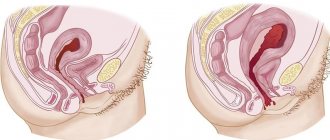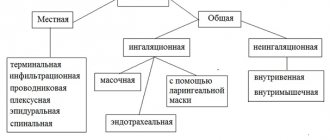Breast milk is undoubtedly very beneficial for the baby. It contains all the necessary vitamins and microelements, as well as maternal antibodies that protect the child from pathogenic microflora. For a newborn and baby up to 6 months, this is the main food and drink. But the child grows and develops, so he needs more nutritious nutrition.
By the first year of life, he is already accustomed to regular food, eats vegetables, fruits, meat and fish dishes, and cereal porridge. Therefore, mother's milk gradually loses its original purpose. Mostly, mothers think about how to wean their child from breastfeeding at the age of about 1.5 years. Weaning is always stressful for the baby. Therefore, this should be done gradually and correctly.
How to wean your baby off breastfeeding at night
Sooner or later, all mothers think about how to painlessly wean their child from night feeding. The essence of the matter is that the baby has absolutely no idea of the passage of time. Moreover, the newborn’s body requires continuous feeding from breast milk.
loading…
It is important to know that experts from all civilized countries claim that it is night breaks during feeding that have a negative impact not only on the child, but also on the mother.
During the first weeks of life, the baby finds it difficult to tolerate nighttime separation from his mother. For women, in turn, night feeding is a key tool for improving lactation. This is due to the fact that the hormone that affects milk production is synthesized mainly at night. Therefore, it is initially worth thinking about the advisability of changing the time limits for feeding the child.
If you don't get enough sleep, it makes sense to think about how to properly wean your baby from latching on to the breast too often at night. There are no specific methods here, but there are useful practical tips:
- Try to feed your baby more during the daytime.
- Increase the amount of skin-to-skin contact during the day.
- Before you go to bed, try to wake your baby and feed him well.
- Don't turn feeding into a ritual that accompanies sleep. Think of other ways to calm your child before a night's rest: carry your child around the house or go for a short walk. Don't forget about the lullaby.
- If you sleep with a baby, you need to go to bed with clothes on so that your breasts are not in direct access. When the baby falls asleep, remove the nipple from his mouth and put on sleeping clothes.
Interesting: Persimmon during breastfeeding
We wean a baby using grandma's method
In the time of our grandmothers, there were no sophisticated methods or special techniques that were aimed at weaning a child from breastfeeding.
Then there were several ways that helped our relatives cope with this problem:
- bandaging the chest with a towel/sheet (the child was given to relatives for this period of time; this method is not the most successful, because it “hits” the psyche of mother and baby greatly);
- lubricating the breast with various means: brilliant green, iodine, mustard, celandine, etc. (also not the best option, because this technique undermines the child’s trust in the mother).
Such methods are now completely irrelevant.
The fact is that in the first case the risk of mastitis increases . Moreover, a long separation of the child and mother leads to consequences (great psychological stress, because the child does not see his mother and his beloved breast for a long time).
The second grandmother's method may be completely ignored by the child. Initially, of course, the baby will simply be indignant that the mother’s nipple is painted in some strange color. Perhaps he will make a face from the bitter mustard, but in the end he will continue to suckle. I have a friend who tried to wean her child this way - the baby carefully wiped the mustard off his chest with his hand and calmly ate it.
What is the best way to wean a two-year-old child off breast milk?
It’s quite easy to wean a child off breastfeeding after a year using a number of proven recommendations:
- You should always keep some kind of entertainment nearby for your baby to distract him when he wants to breastfeed.
- Try to never sit idle within your toddler's field of vision so that he is not tempted to demand your attention.
- Use the “1000 kisses” technique. It is necessary to replace weaning with excessive attention in the form of frequent hugs and kisses. This will give the child more confidence and calm him down.
- Don't forget to pamper your child with his favorite foods.
- Give your baby water, fruit juice or compote more often.
- You should not schedule weaning at a time when your child is sick or has just suffered some kind of illness.
Medicinal solution to the problem
You can “get rid” of milk and stop breastfeeding with the help of medications. They are prescribed by a doctor and only in certain cases. If a mother simply decides to stop naturally feeding her one-year-old child, the doctor will try in every possible way to dissuade her.
Unfortunately, there are situations in life when stopping breastfeeding is extremely necessary. For example, a disease of the mother that can be transmitted to the child through breast milk. In this case, certain medications are prescribed.
Doctors often prescribe Dostinex . However, you should not rely only on “pills”. When a woman starts taking medications, the baby reaches for the breast no less than before. The only point of the drug is that it reduces the amount of oxytocin and prolactin (hormones that influence the production and flow of milk).
Next, the mother has to use her wits and do everything possible so that the baby is less likely to reach for the breast:
- distract the baby with various games;
- hug and kiss more often (tactile communication);
- feed tightly;
- And so on.
This method is also not ideal, but sometimes it is the only option for a woman (when it comes to health). Abrupt separation of the baby from the breast affects his nervous system, and not for the better.
Therefore, you should resort to this method only if you need to quickly stop breastfeeding.
Weaning a child from breastfeeding according to Komarovsky
In this case, it could not have happened without the help of Dr. Komarovsky. All his recommendations are based on WHO requirements and standards, as well as personal observations of the legendary pediatrician. Thus, Komarovsky argues that a child cannot be weaned until one and a half years of age. Otherwise, the baby will not have the opportunity to develop to the point where complementary feeding is really necessary. In general, the doctor strongly advises to avoid even the slightest violence in this process, which can be achieved by following 5 basic postulates:
- A nursing mother needs to reduce the amount of fluid she consumes. This measure will cause difficulty for the baby to suckle at the breast.
- Reduce the duration of feeding or completely replace it with some exciting activity.
- There is no need to express milk.
- To further release fluid from the mother’s body, the expert advises resorting to physical activity.
- It is necessary to reduce as much as possible the number of foods that help improve lactation.
Interesting: Breastfeeding and some nuances
Practical recommendations on how to gently wean a one-and-a-half-year-old baby off breastfeeding
If the mother decides to stop feeding, then she should be patient and persevering. Most children react poorly to weaning - they cry, throw tantrums, act up, and sleep poorly. But if the decision is made, then you need to go to the end.
Where to begin
There are several ways to wean your child off breastfeeding. The most common and effective of them:
- Separation of mother and baby. For some period, the mother leaves or sends the child to a close relative. The baby does not see his mother, so he quickly forgets about the breast.
- Medication method. It involves taking medications that reduce lactation and gradually stop milk production.
- Planned. This is a gentle, gradual weaning. In this case, the baby is not stressed.
The mother should decide which method of weaning from breastfeeding is suitable for her baby.
Most pediatricians recommend weaning gradually and gently. To do this, you need to follow the following recommendations in turn:
- first cancel 1 feeding;
- observe the baby's reaction;
- if there is no negative reaction for several days, cancel 1 more feeding;
- If the baby demands milk, you should distract him.
We cancel daytime feedings and improve sleep during the day
When a start has been made, you should gradually, step by step, abandon daytime feeding. To prevent this from becoming stressful for your baby, it is important to follow some rules:
- Replace each feeding with nutritious food and drink;
- hide your breasts to avoid temptation;
- replace breastfeeding with other physical contact - hugs, massage, games, kisses;
- when milk is required, distract (give a treat, read a book);
- stand your ground (do not give in under the pressure of crying and screaming).
Very often, babies fall asleep while sucking on the breast. This is a kind of ritual that can be difficult to give up. Little tricks will help you establish daytime sleep without breasts:
- Dad or grandma can put the baby to bed.
- Mom puts the baby to bed and then leaves for a while. At first it can be 1 minute, then the absence time increases. This is how the child learns to fall asleep on his own.
- Instead of feeding, you can read to your baby, sing a lullaby, or tell him a story. Monotonous speech calms and promotes sleep.
We wean at night without hysterics
If your baby has learned to fall asleep on his own during the day, then it’s time to put him to sleep without breastfeeding at night. To make him fall asleep easier and faster, it is important to create the necessary conditions for him:
- Perform evening rituals every day, after which it is time for sleep. This is how the baby develops a kind of reflex. For example, before going to bed, you can collect your toys, brush your teeth, and put on your favorite pajamas.
- Evening swimming. Warm water has a calming effect on the child's nervous system.
You can add herbs to the bath - valerian, mint, chamomile. - The child must have his own crib.
- The lights in the room should be dim or turned off.
- You can sing a lullaby to your baby or tell a story. This is calming and promotes sleep.
If it is difficult for your baby to fall asleep without breastfeeding, you should try rocking him in your arms. This way he will feel his mother’s warmth, quickly calm down and fall asleep.
See also:
How to teach a 6-8 month old child to crawl on all fours?









